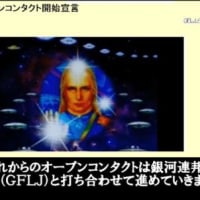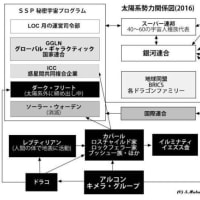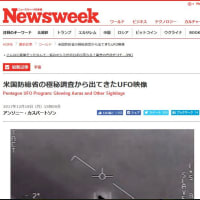The Ainu and Their Culture: A Critical Twenty-First Century Assessment
http://apjjf.org/-Chisato-Kitty-Dubreuil/2589/article.html
(Google tlanslation)

The Ainu have been depicted as "mysterious proto-Caucasians" unrelated to Japanese people. However, DNA research shows that Ainu are the direct descendants of the Jomon, the ancient people who created Japan's first culture and one of the world's oldest extant potteries. This means that the Ainu and present-day Japanese are biologically related. Would you comment?
KD: The findings were only new to those who wanted to cling to the myth of a lost Caucasian tribe. Some anthropologists have reluctantly supported the theories that came into question because of DNA evidence. True scholarship is open to change, and the advent of DNA research was threatening for some. Other anthropologists knew DNA would revolutionize the field, and were excited by what that might mean. What has been done so far is only the beginning. I don't think that it is an exaggeration to compare DNA with finding out that the world isn't flat.
Clearly DNA is the most recent pathway to ‘truth,’ but it's not the only way to find connections to the past. A few Ainu, including myself, and even fewer freethinking Japanese anthropologists, had already looked at the art of the Jomon as it pertains to the Ainu of long ago. (The word 'Jomon' has become an all-inclusive word for early cultures in what is now called Japan; for convenience, I will also use this generic term).

When most people think of Jomon, it is their pottery that first comes to mind, especially the highly imaginative vessels with designs made with twined cords. Through research I have found that many of these designs are remarkably similar to traditional Ainu designs. More important to my work are the lesser-known Jomon humanoid clay figurines that featured Ainu style clothing with Ainu-like designs, also placed where they are found on traditional Ainu robes.
アイヌは、日本人とは無関係の「神秘的な原始人」として描写されています。しかし、DNAの研究によると、アイヌは日本初の文化と世界最古の陶器を創造した古代の縄文人の子孫です。これは、アイヌと現在の日本人が生物学的に関連していることを意味します。コメントしますか?
KD:この調査結果は、喪失したコーカサス人の部族の神話に固執することを望んでいた人にのみ新しいものでした。いくつかの人類学者は、DNAの証拠のために疑問の余地があった理論を不本意に支持してきた。真の奨学金は変化する可能性があり、DNA研究の出現は一部の人にとって脅かされていました。他の人類学者は、DNAがその分野に革命を起こし、それが意味することに興奮していることを知っていました。これまでに行われてきたことは、始まりにすぎません。私は、世界が平らでないことを知ってDNAを比較することは、過言ではないと思います。
明らかに、DNAは「真実」への最新の経路ですが、それは過去とのつながりを見つける唯一の方法ではありません。私を含む少数のアイヌ人、そして日本の人類学者のほんの少ししか知りませんでしたが、昔はアイヌ民族に関連した縄文の芸術を見ていました。 (「縄文」という言葉は、今や日本と呼ばれる初期の文化の包括的な言葉になりました。便宜上、この総称も使用します)。ほとんどの人が縄文を考えているとき、まず念頭に置いたのは陶器であり、特に撚り糸で作られたデザインの高い想像力のある船です。研究を通して、私はこれらのデザインの多くが伝統的なアイヌのデザインと非常に似ていることを発見しました。私の作品にとってもっと重要なのは、あまり知られていない縄文人形の粘土の人形です。アイヌのようなデザインのアイヌスタイルの服を着用し、アイヌの伝統的な衣服のある場所に配置しました。
Another origin myth that is losing credibility is the belief that the Ainu are some kind of lost tribe of Caucasians. The myth was created by early European scholars from the mid-nineteenth century, and because this was a respected view of Europeans, the myth can still be found as fact in some textbooks and reference books. There is some legitimate basis for the ‘mistake.’ The Ainu of the period looked nothing like the Japanese. The Ainu were muscular with skin tones similar to the darker French or Italians. They were very hairy, with thick and wavy hair, luxurious beards, and abundant body hair. Eye color was mostly brown, but could be ‘bluish’ or ‘greenish,’ no doubt a Russian influence. Most importantly, the very young were reported not to have the Mongolian ‘blue’ spot on their lower back. Today, because of intermarriage with the Japanese, the above features are not always present, but I have very thick wavy hair and in the summer I get a very dark tan, my eyes have a more European look, and my body build is somewhat muscular. For all these reasons during my youth I was subject to verbal taunts of “dojin.” While the dictionary meaning is “native,” it is often used as a pejorative term.
信憑性を失うもう一つの起源神話は、アイヌ民族が白人の失われた部族であるという信念です。この神話は19世紀半ばの初期のヨーロッパ学者によって作られたものであり、これはヨーロッパ人の尊敬された見解であったため、一部の教科書や参考書では神話が事実として見いだされる可能性があります。 「間違い」には正当な根拠があります。この時期のアイヌは日本人のようには見えませんでした。アイヌは、フランス語やイタリア語の暗い肌色に似た肌色の筋肉を持っていました。彼らは非常に毛深く、太く波打つ髪、贅沢なひげ、豊かな体の髪でした。目の色はほとんど茶色だったが、青みがかったり、緑がかったりした。ロシアの影響は間違いない。最も重要なことに、若い人たちは、モンゴルの「青い」スポットを背中に持たないと報告されました。今日、日本人との結婚のために、上記の特徴は常に存在するとは限りませんが、私は非常に厚い波状の髪を持ち、夏には非常に暗いタンを、私の目はよりヨーロッパ的な表情をして、体の筋肉はやや筋肉質です。私の青年時代のこれらすべての理由から、私は "道人"という言葉の嫌悪感を受けました。辞書の意味は "ネイティブ"ですが、それはしばしば敬虔な言葉として使われます。
One very important misconception is about the bear, the god of the mountains. Some people think that because the bear is ceremonially killed in the "iyomante," the spirit-sending ceremony, it is a sacrifice to god. IT IS NOT! We believe that the bear IS a god spirit, disguised as a bear (or other living thing), who comes to the people with its gifts of food and fur. The death of the bear releases the spirit, allowing it to return to god's land. I have been asked about my use of the term “god’s land” as opposed to the most familiar term “the land of the gods”? For us, “god’s land” refers to land belonging to the gods, whereas “land of the gods” suggests a more transient quality. We believe that the use of the term eliminates any ambiguity as to the proprietorship of god’s land.
非常に重要な誤解の1つは、山の神、クマについてです。 その熊が儀式の儀式である「イヨマンテ」で命を犠牲にしているので、それは神の犠牲です。 そうではない! 私たちは、クマは食べ物や毛皮の贈り物で国民に来るクマ(または他の生き物)として装飾された神の霊であると信じています。 クマの死は精神を解放し、それが神の土地に戻ることを可能にする。 私は、「神の国」という最もよく知られている用語とは対照的に、「神の土地」という言葉の私の使用について尋ねられました。 私たちにとって、「神の土地」は神に属する土地を指し、「神の土地」はより過渡的な質を示唆しています。 この用語の使用は、神の土地の所有権についてのあいまいさを排除すると考えています。
VIDEO & MUSIC
Kandakoro Kamuy (Ainu music)
https://www.youtube.com/watch?v=gDmHn-OzWZo
・・・・・・・・・・・・・・・・・・



















